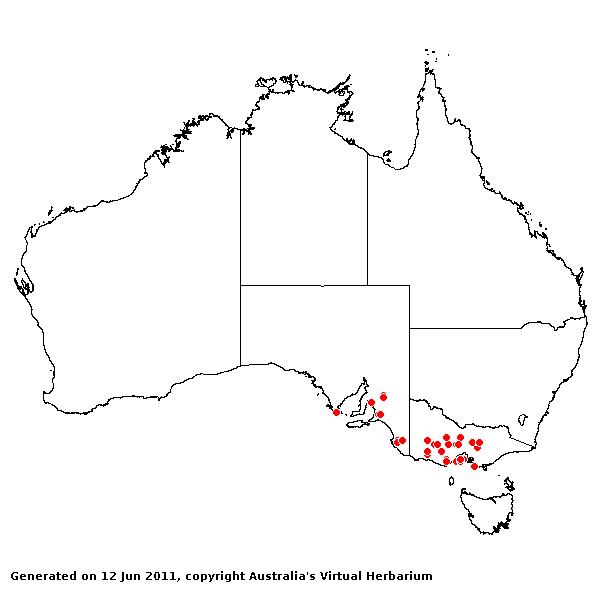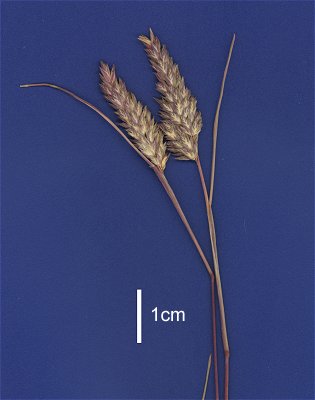Tribolium acutiflorum* (Nees) S.A.
Renvoize. Kew Bull. 40: 798 (1985).
Classification. (GPWG 2001) : Subfamily
Danthonioideae. Tribe Danthonieae.
Basionym and/or
Replacement Name: Brizopyrum
acutiflorum Nees, Fl. Afr. Austral. Ill. 371 (1841).
Type of Basionym or
Protologue Information: LT: Drège s.n., South Africa: Cape Prov.: in
dumetis ad Ebenzar et in Groenvalley ad montem Piquetberg (K(fragm., PRE); ILT:
BM, K, LE). LT designated by Linder & Davidse, Bot. Jahr. Syst. 119: 477
(1998).
Recent synonyms:
Desmaziera acutiflora, Plagiochloa acutiflora.
Key references
(books and floras): [2002] D.Sharp & B.K.Simon, AusGrass, Grasses of
Australia, [2006] J.Jessop, G.R.M.Dashorst, F.M.James, Grasses of South
Australia (314).
Illustrations:
[2005] K.Mallet (ed.), Flora of Australia 44B: Poaceae 3 (Fig.
7), [2006] J.Jessop, G.R.M.Dashorst, F.M.James, Grasses of South Australia (315, fig. 246).
Habit.
Perennial. Culms geniculately ascending or decumbent, 10–40 cm tall. Ligule a
fringe of hairs. Leaf-blades 50–120 cm long, 2–3 mm wide.
Inflorescence.
Inflorescence compound, a panicle of racemes. Panicle linear or oblong, 1–2.5
cm long.
Spikelets.
Spikelets sessile. Fertile spikelets many flowered, with at least 2 fertile
florets (4–9), comprising 4–9 fertile floret(s), with diminished florets at the
apex, oblong, laterally compressed, 4–6.5 mm long.
Glumes.
Glumes similar, similar to fertile lemma in texture. Lower glume ovate,
coriaceous, keeled, 1-keeled, 5 -nerved. Lower glume surface glabrous. Upper glume
ovate, 3.5 mm long, coriaceous, keeled, 1-keeled, 5 -nerved. Upper glume
surface glabrous.
Florets.
Fertile lemma 2.5–3.5 mm long, without keel, 7 -nerved. Lemma surface glabrous
or indumented. Palea 2 -nerved.
Continental
Distribution: Africa and Australasia.
Australian
Distribution: South Australia, Victoria.
South Australia:
Northern Lofty, Southern Lofty, South-eastern. Victoria: Gippsland
Plain, Grampians, Midlands, Otway Plain, Volcanic Plain, Wannon, Wimmera.
Notes.
Related to T. obliterum by the glabrous glumes, but distinct by the
three rows of hairs on the lemma, with the keel hairs strongly clavate, as well
as the axillary inflorescences.
Introduced
from South Africa, a weed of disturbed ground in temperate Australia, but also
invading undisturbed vegetation. Flowers Sep. to Dec.





